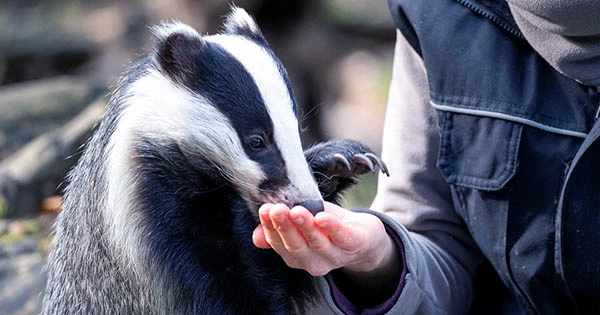A laboratory study indicates that an antibiotic sprayed on orchard crops to prevent bacterial infections delays bumblebee cognition and lowers their foraging efficiency. Scientists from Emory University and the University of Washington reported their findings in the Proceedings of the Royal Society B.
The study focused on streptomycin, an antibiotic that has been increasingly popular in American agriculture over the last decade.
“No one has examined the potential impacts on pollinators of broadcast spraying of antibiotics in agriculture, despite their widespread use,” says Laura Avila, co-lead author of the paper and a post-doctoral fellow in Emory’s Department of Biology.
The current investigation was based on laboratory tests in which bumblebees were given an upper-limit dietary exposure to streptomycin. It is unknown whether agricultural streptomycin spraying affects wild bumblebees or whether they are exposed to the tested concentration in the field.
“This paper is a first step towards understanding whether the use of streptomycin on food crops may be taking a toll on pollinators that benefit agriculture,” says Berry Brosi, senior author of the paper. Brosi began the work as a faculty member in Emory’s Department of Environmental Sciences and is currently with the University of Washington.
The researchers will now conduct field tests where streptomycin is sprayed on fruit orchards, thanks to a grant from the United States Department of Agriculture. If a negative influence on bumblebees is discovered, the researchers want to have evidence to back up proposals for practices and regulations that will benefit farmers.
“Production of our food, farmer livelihoods, and the health of pollinators are all tied together,” Brosi says. “It’s critically important to find ways to maintain agricultural production while also conserving the ecosystem services including pollination that a biodiverse ecosystem provides.”
The researchers think that the harmful impact of streptomycin on bumblebees shown in lab trials is due to alteration of the insects’ microbiome, based on existing evidence.
Production of our food, farmer livelihoods, and the health of pollinators are all tied together. It’s critically important to find ways to maintain agricultural production while also conserving the ecosystem services including pollination that a biodiverse ecosystem provides.
Berry Brosi
“We know that antibiotics can deplete beneficial microbes, along with pathogens,” Avila says. “That’s true whether the consumers of the antibiotics are people, other animals, or insects.”
Avila works in Nicole Gerardo’s lab at Emory University, where she is an entomologist who researches the co-evolution of insect-microbe systems.
Antibiotic spraying on U.S. crops has expanded rapidly in the last decade as farmers battle an upsurge in plant bacterial illnesses. “Fire blight” causes apple and pear trees’ blooms and branches to become black, making them appear burnt by fire, and it can potentially kill entire trees.
“Citrus greening,” also known as “yellow dragon disease,” turns citrus fruits green, bitter and unusable and has devastated millions of acres of crops throughout the United States and abroad.
“I’ve seen the struggle of making a living by producing crops, how expensive and difficult it can be to control diseases and pests,” says Avila, who grew up in a coffee-producing region of Costa Rica.
Her family’s farm was surrounded by mostly undeveloped woodlands. “The diversity all around us fascinated me,” Avila says. “I decided to become a bee biologist because I wanted to understand how the natural environment can influence agricultural production and vice versa.”
More than 100,000 species of pollinators, including 20,000 species of bees, as well as other insects and vertebrates like birds and bats, are needed to pollinate 75% of the world’s food crops. Despite this, many insect pollinator species, particularly bees, are threatened with extinction.
Previous research has demonstrated that the antibiotic tetracycline, which is used to treat diseases in managed honeybee hives, alters the gut microbiome of the insects, making them more susceptible to pathogens and increasing mortality.
High oxytetracycline concentrations have been discovered to have a similar effect on the gut microbiome of bumblebees, lowering their resistance to infections. High dosages of tetracycline have been shown to influence honeybee learning, whereas oxytetracycline has been shown to slow the commencement of foraging in controlled colonies.
The researchers tested the effects of an upper-limit dietary exposure to streptomycin on controlled bumblebees, Bombus impatiens, in the lab for the current study. To replicate nectar, half of the bees were fed simple sucrose or sugar water. The remaining bees were fed streptomycin-laced sucrose.
The bees were given different colored cardboard strips, one yellow and the other blue, after two days on this diet. The two colors were saturated with ordinary water and sugar, respectively. Each bee was given a single colored strip to contact with its antennae or proboscis in a series of training sessions.
The researchers counted how many attempts it took for a bee to exhibit a preference for sucrose-soaked color strips. In comparison to the other bees, streptomycin-fed bees required nearly three times as many trials to develop the association.
Antibiotic-treated bees were also more likely to show avoidance behavior in response to either of the stimuli. Five minutes later, those bees that had cleared the training threshold were given a short-term memory test.
Each bee was given both cardboard strips at the same time and permitted to choose one. Streptomycin-treated bees chose the sucrose reward at a rate of roughly 55 percent, while untreated bees chose the sucrose at a rate of nearly 87 percent.
Trials were conducted in a foraging chamber with an experimental array of artificial flowers that dispensed sucrose or plain water to measure foraging abilities. The flowers were either blue or yellow, but the size and shape were the same.
Each bee was given a small, ultra-lightweight radio frequency identifying “backpack” to trace its movements among the artificial flowers, which each had a short-range antenna and tracking device.
The antibiotic-exposed bees visited considerably fewer sucrose-rewarding flowers than the control bees, according to computer analysis. Avila and Brosi will begin field tests in the spring to see if broadcast streptomycin spraying impacts bumblebees in pear orchards.
“I was surprised at how strong an effect we found of streptomycin on bumblebees in the laboratory experiments,” Brosi says. “That makes it imperative to learn if we see similar effects in an agricultural setting.”
Should field study reveal negative effects on bumblebees from agricultural spraying of streptomycin, the researchers suggest that the timing of antibiotic treatment, the amount applied, and feasible alternatives to antibiotic use might be used as mitigation techniques.
Elizabeth Dunne, an Emory environmental sciences major who has since graduated, and David Hofmann, a former post-doctoral scholar in Emory’s Department of Physics, are co-authors of the current study.
















